Coffee Knowledge Lists
-
What it's like to really drink coffee.

Are you enjoying the delicious coffee? If the freshly brewed coffee is too hot, will you try your best to cool it? When drinking coffee, do you habitually use a coffee spoon to take a sip into your mouth? Will a bite of snack in your left hand and a sip of coffee in your right hand make you feel elated?
2014-07-09 Coffee knowledge coffee encyclopedia coffee drinking techniques -
How to ensure the quality of specialty coffee

Professional processing of milk using professional stainless steel tanks to heat milk as far as possible when using steam, do not shake the milk too much and heat the milk to 66 degrees Celsius 71 degrees Celsius. At this temperature, put the heated milk into the freezer when not in use, add fresh milk to keep the steam nozzle clean and perfect to make espresso within an hour.
2014-07-09 Coffee knowledge coffee quality coffee encyclopedia -
Comparison of parameters between Arabica Coffee and Robasta Coffee
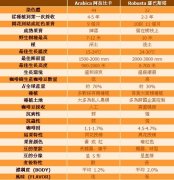
Coffee beans are the seeds of Rubiaceae Family plants. There are at least 25 main varieties of Coffea Genus, among which the two most important varieties are Arabica species Coffea arabica (Arabica coffee) and Canafora species Coffea canephora (Robusta coffee), also known as Robasta Coffee. Ah
2014-07-09 Arabica Robasta coffee beans boutique coffee beans -
The full name of coffee.

Blue Mountain is produced in the mountains of Jamaica. Due to the requirements of season, humidity and temperature, it produces less and tastes quite mellow. It is the best coffee. Brazil is represented by Sandos coffee, beans somewhat bitter and aromatic, often used to blend milder coffee. Mocha Yamen produces the best, followed by Ethiopia. taste sour, sweet, and
2014-07-09 Coffee knowledge Coffee name Coffee encyclopedia -
Six standards determine the special temperament of Blue Mountain Coffee

Together, the weather, geological structure and topography of Jamaica provide a unique ideal place.
2014-07-09 Coffee knowledge Blue Mountain Coffee Blue Mountain Standard Coffee Encyclopedia -
Wet treatment methods and steps of Yunnan coffee beans
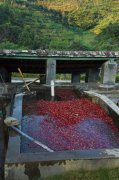
As the harvest season is almost over, I would like to add an overview of the coffee processing process. In this blog post, I will introduce to you the steps of wet treatment in Yunnan after coffee picking. After harvest, the berries are either sent directly to the pulp collector (if the harvest is done well), or concentrated in a siphon tank filled with water. The berries are here.
2014-07-09 Yunnan coffee beans wet treatment of coffee beans Yunnan small coffee beans -
Wet treatment methods and steps of Yunnan coffee beans
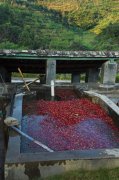
As the harvest season is almost over, I would like to add an overview of the coffee processing process. In this blog post, I will introduce to you the steps of wet treatment in Yunnan after coffee picking. After harvest, the berries are either sent directly to the pulp collector (if the harvest is done well), or concentrated in a siphon tank filled with water. The berries are here.
2014-07-09 Yunnan coffee beans wet treatment of coffee beans Yunnan small coffee beans -
Requirements for Inspection and Quarantine record of Coffee planting Base (Yunnan)

1. Base basic conditions and requirements 1.1 continuous and have a certain scale, the area should not be less than 100 mu. 1.2 there shall be a natural or artificial effective isolation zone around the base. 1.3 No pollution sources around the base, such as chemical plants, paper mills, professional feeding
2014-07-09 Coffee planting coffee planting base coffee inspection -
Brief introduction of Coffee planting History and planting Technology

In China, according to historical records, coffee trees were planted in Taiwan for the first time in 1884, and coffee cultivation in mainland China began in Yunnan. In 1902, a French missionary named Tian introduced seeds from Yingong, Binchuan County, Yunnan Province. it was successfully planted in a place called Zhu Kula, a tributary of the Jinsha River. The commercial cultivation of coffee in Yunnan began in 1985.
2014-07-09 Coffee cultivation coffee history coffee planting technology -
The requirements of Coffee on Ecological Environment

Small seed coffee is native to the lower part of the Ethiopian rainforest in northern Africa. The temperature is relatively low, with an average annual temperature of 20 degrees. The origin of medium-grain coffee is near the equator. Therefore, small seed coffee has stronger cold tolerance and wider adaptability than medium grain coffee. Medium-grain coffee requires a slightly higher temperature. First, the requirement for temperature should be based on the natural conditions of Yunnan, and the suitable planting area of coffee should be selected.
2014-07-09 Coffee environment coffee beans coffee trees -
Why does Blue Mountain Coffee taste so pure?

The best Blue Mountain Coffee is undoubtedly one of the best coffee available.
2014-07-09 Coffee knowledge Blue Mountain Coffee Coffee taste Coffee Encyclopedia -
Key factors determining the quality of coffee

The nature of coffee drinks is determined by raw beans; however, the mixing technology of raw beans, the roasting of coffee beans and the preservation of roasted coffee beans determine whether the essence of coffee can be brought into full play.
2014-07-09 Coffee knowledge coffee quality coffee encyclopedia -
The harvest and production process of coffee

The collection time is different in different countries and regions. The harvest process requires a lot of manpower, especially high-quality coffee, which can only pick fully ripe brown coffee peaches. Since all coffee peaches do not ripen at the same time, you need to go back to the same tree many times to pick them. Coffee beans come from a ripe peach called cherrie.
2014-07-09 Coffee trees coffee beans coffee harvesting coffee production -
Planting conditions of Coffee trees

The origin of the coffee tree is Ethiopia in Africa. In botany, coffee trees belong to the evergreen trees of the subgenus Rubiaceae, and coffee beans, commonly known as coffee beans, are actually the seeds of the fruit of coffee trees. They are called coffee beans only because they are shaped like beans. Climate is the decisive factor for coffee cultivation. Coffee trees are only suitable for growing in the tropics or subtropics, so latitude 25 degrees south and north.
2014-07-09 Coffee tree planting coffee tree planting conditions coffee beans -
Real picture of the process from coffee tree to harvest
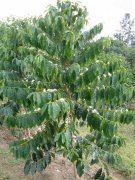
The coffee tree is more than 3 meters tall. Coffee flowers white flowers, beautiful like magnolia, but life is short, it will wither after 3 days! After the coffee beans are in full bloom, the coffee beans turn from green to red and when the fruit is bright red and ripe, you can begin to pick and harvest the fruit, remove the skin, soak it in water for 12 to 16 hours, and then wash it. Remove the peel of coffee beans
2014-07-09 Coffee tree coffee tree harvest coffee planting -
Real picture of the process from coffee tree to harvest
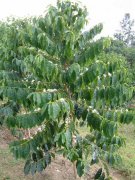
The coffee tree is more than 3 meters tall. Coffee flowers white flowers, beautiful like magnolia, but life is short, it will wither after 3 days! After the coffee beans are in full bloom, the coffee beans turn from green to red and when the fruit is bright red and ripe, you can begin to pick and harvest the fruit, remove the skin, soak it in water for 12 to 16 hours, and then wash it. Remove the peel of coffee beans
2014-07-09 Coffee tree coffee tree harvest coffee planting -
Details that can not be ignored when drinking coffee

Going to a coffee shop to taste coffee is one of the daily formulas for the French, so it's no big deal. The purpose of going to a coffee shop is mostly just to chat, so take it easy.
2014-07-09 Coffee knowledge coffee details coffee encyclopedia -
Cultivation techniques of small-grain Coffee

Disease control: 1. Coffee rust is the main disease of coffee, the most harmful, the damaged plants, light reduced yield, heavy death. Coffee rust is mainly harmful to leaves and sometimes to young fruits and twigs. After the leaves were infected, many light yellow spots appeared at first and enlarged in the form of water stains, followed by orange-yellow powdery spores on the back of the leaves, and there was a light green halo around the disease spots, and the disease spots in the later stage.
2014-07-09 Small-grain coffee cultivation coffee beans Yunnan small-grain coffee beans -
Planting and harvesting of coffee

The first people to drink coffee lived in Ethiopia. A drink called Buncham was found in the Arab scientific literature of 900-1000 AD, but it is not certain that it is coffee. These documents mainly record the scientific value of this bean called Buncham. In addition to introducing the protective effects of this drink on the stomach, organs and skin, the author also mentioned that it can make
2014-07-09 Coffee planting coffee picking coffee beans -
Sowing process of coffee seedlings (group of pictures)
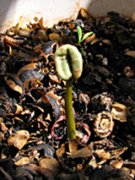
60 days after sowing, the budding period of coffee beans after sowing is based on the principle of keeping the seedling basin moist. Ideally, in the temperature range of 19-26 ℃ and moisturizing conditions, it takes 55-60 days from sowing to emergence, and the emergence rate is the highest at 80 days. At this time, Kunming is in the temperature range of 6-25 ℃, so it is intentional to put the seedling pot on the sunny windowsill of the house and cover it at night.
2014-07-09 Coffee seedlings coffee cultivation coffee beans
